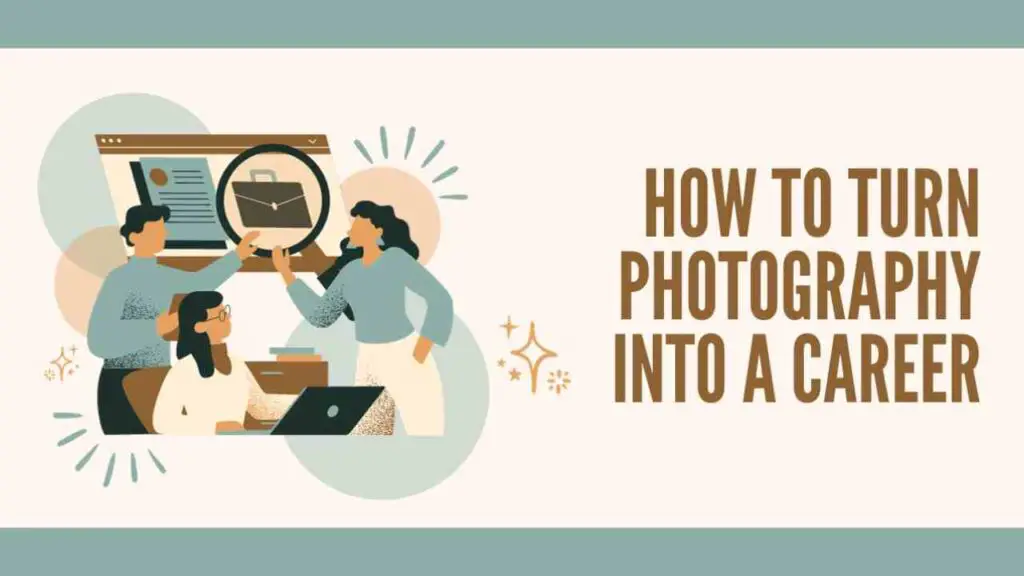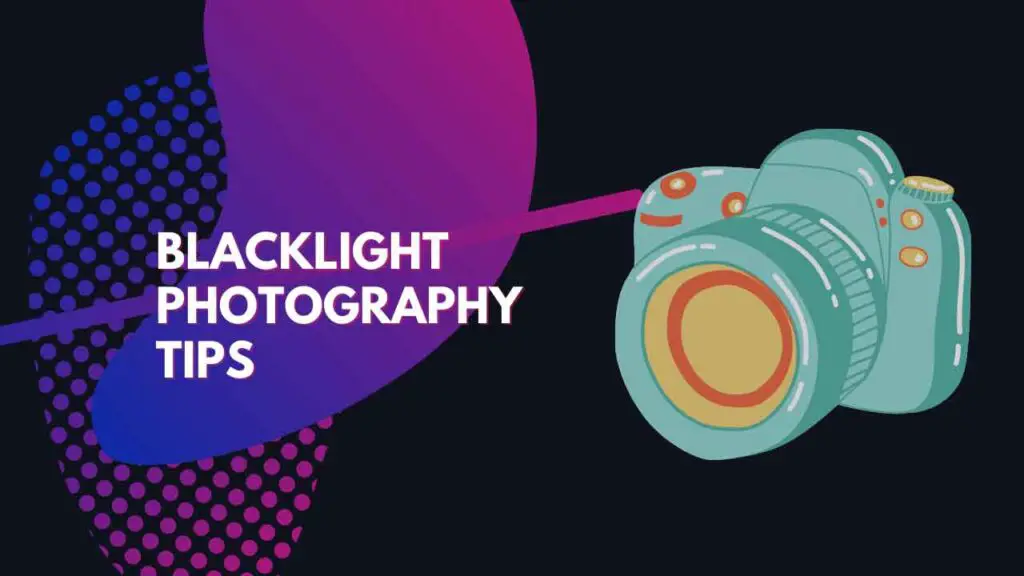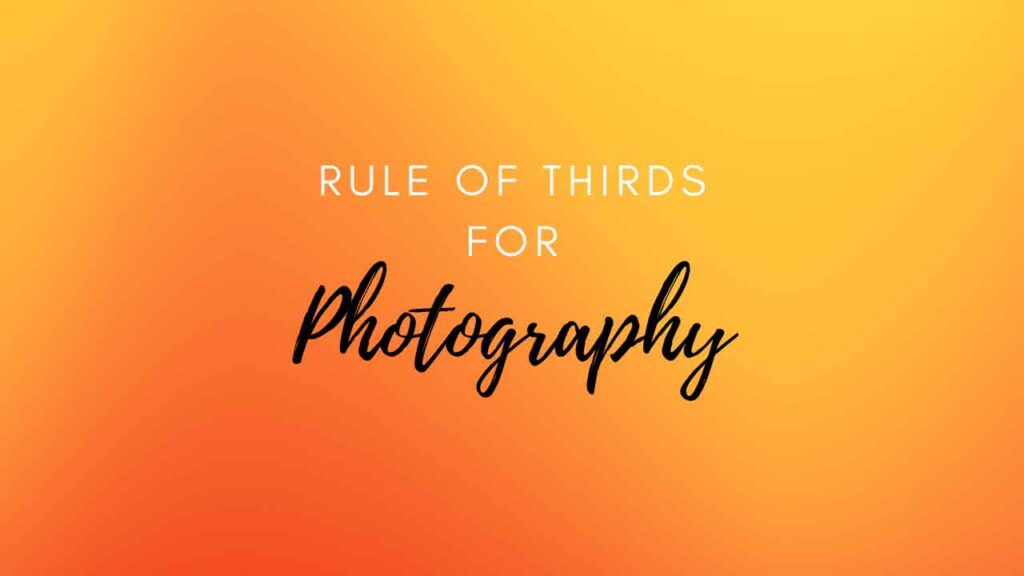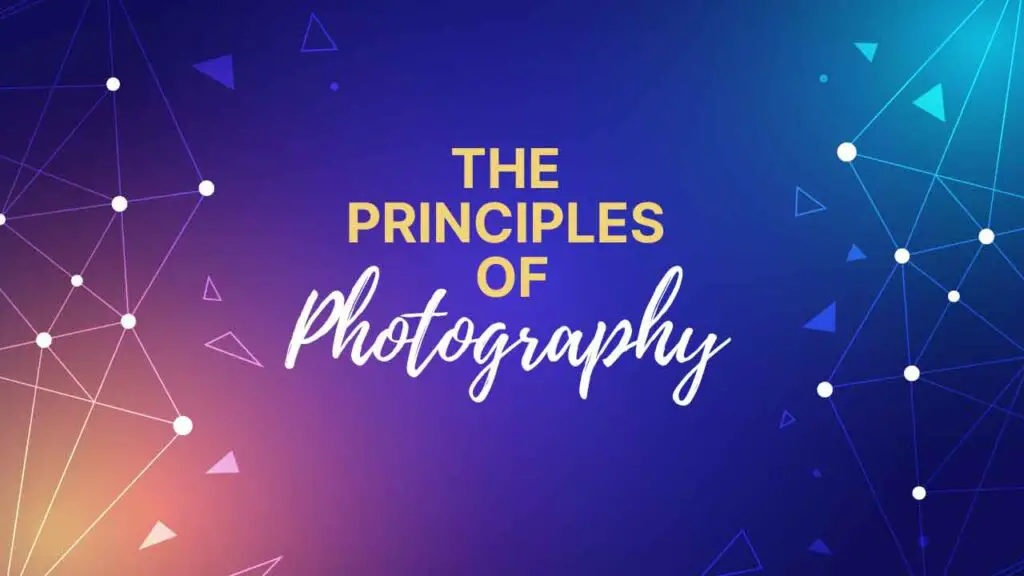THIS ARTICLE MAY CONTAIN AFFILIATE MARKETING LINKS! IN CASE YOU MAKE A PURCHASE THROUGH ONE OF THE LINKS, WE'LL GET A SMALL COMMISSION. WITH NO EXTRA CHARGES TO YOU. THANKS!!
Given the ubiquity of smartphones equipped with high-resolution cameras, one might think becoming a photographer is as simple as pointing and shooting. However, transitioning from an amateur shutterbug to a professional photographer with a sustainable career is a multifaceted process that requires a strong grasp of both the craft and business aspects of photography. This includes mastering the basic skills of composition, lighting, and camera handling, developing a discerning eye for your niche specialization, creating and continually updating a strong portfolio, establishing your unique brand, and having a firm understanding of the industry’s landscape. Let’s see how to turn photography into a career?
How to turn Photography into a Career
Understanding Basics of Photography
Begin by learning and mastering the basic principles of photography. These principles include but are not limited to lighting, composition, and understanding how to fully utilize your camera gear. Photography is both a technical and creative discipline, so it is crucial to become familiar with both aspects.
Composition
Composition refers to the arrangement of different elements within your frame. This involves understanding the rule of thirds, framing, leading lines, symmetry and patterns, depth, and balancing elements. The aim is to construct a photograph that is visually pleasing and engaging. Educate yourself by reading photography books, attending workshops, or taking online courses. Another excellent method to improve composition is to study works of renowned photographers.
Lighting
Lighting is a fundamental part of every photograph. It determines the mood, texture, color, and depth of the shot. Experiment with different lighting conditions such as natural light, low light, hard or soft light, overhead light, and more. Understand how different types of light can dramatically alter the appearance of the subject or scene. Practice shooting at different times of the day to see how the changing light affects your images.
Camera Equipment
The quality of the camera and lenses significantly factor into the final image. Experiment with various cameras and understand their capabilities and limitations. Learn about the different types of cameras – point-and-shoot, DSLR, mirrorless, film, etc., and choose the one that satisfies your needs the most. Lenses can be wide, standard, telephoto, or macro, with each one catering to different types of photography.
Shutter Speed, Aperture, and Exposure
These are the three pillars of photography, collectively known as the exposure triangle. Shutter speed controls how long the camera shutter is open; a fast shutter speed freezes movement while a slower speed can create a blur effect. Aperture refers to the size of the lens opening; a larger aperture (small f-number) allows more light, creating a shallow depth of field, and a smaller aperture (larger f-number) allows less light, increasing the depth of field. Exposure is the brightness or darkness of a photo and depends on the combination of shutter speed, aperture, and ISO.
Practicing and Learning
After understanding these basic concepts, spend time shooting in various scenarios and conditions. Regular practice helps you understand your camera better and improves your decision-making abilities while shooting. Attend photography workshops, join local photography clubs, or enroll in online photography courses. Keep exploring and experimenting; the more you shoot, the faster you’ll learn. Eventually, with consistency and commitment, you’ll be well on your way to turning your passion into a rewarding career in photography.
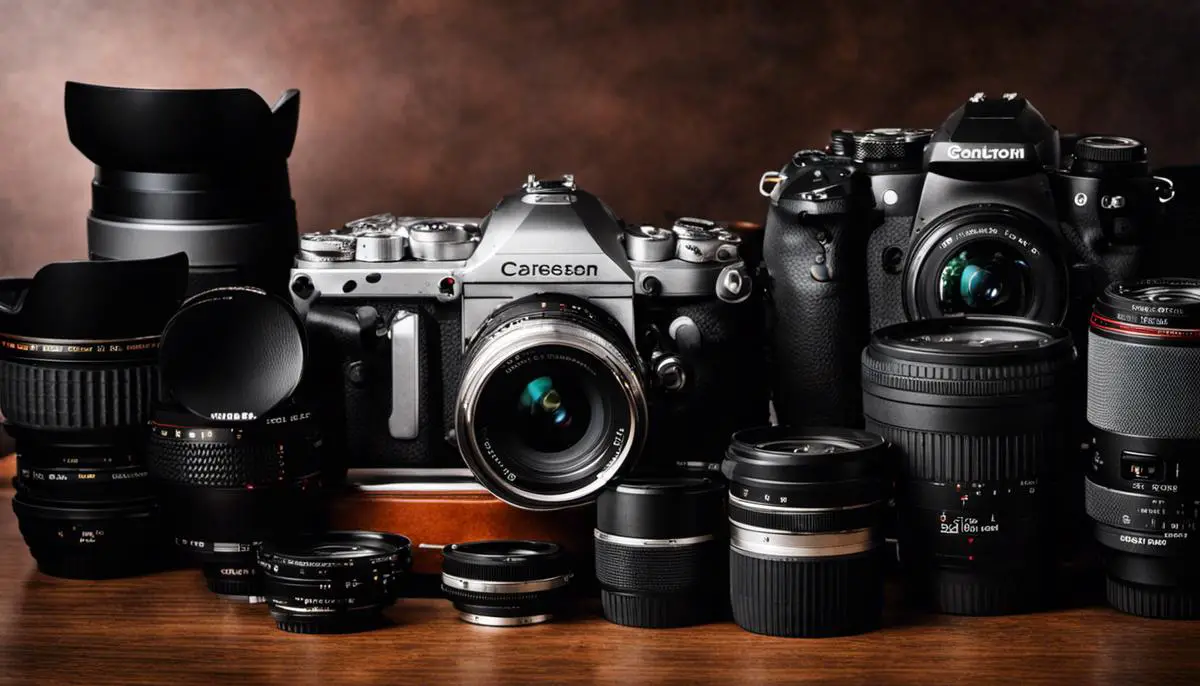
Specialization and Building a Portfolio
Identifying Your Field of Interest in Photography
Getting started with turning your passion for taking pictures into a professional career begins with identifying a particular field of your interest. Do you find your calling in capturing human emotions and turns of life? Portraiture could be your area. Or perhaps it’s the enchanting beauty of nature that calls to your photographic instincts? You might want to explore landscape photography. Maybe it’s the thrill of capturing wildlife in their natural habitat, or the profound joy of immortalizing someone’s special day though your lens. Once you’ve identified your favorite types or genres of photography – be it wildlife, wedding, events, or street photography – focus on honing your skills in that specific area.
The Importance of a Diverse Portfolio
A diverse and compelling portfolio is key to establishing yourself as a professional photographer. Don’t limit it to just the best shots; your aim should be to showcase a range of your photography skills, your unique style, and your growth as an artist. Include examples of your versatility – different types of shots, techniques, and compositions used, even within your chosen specialty. If possible, include some “behind-the-scenes” pictures or details of the creative process involved in some of your major works. This gives potential clients a glimpse into your dedication and passion for your craft.
Showcasing Your Unique Style
While diversity is essential, it’s equally important that your portfolio showcases your unique style. Your style is what differentiates you from other photographers; it’s the personal touch in every frame that shouts out your name. Experiment with various editing methods and pay attention to your artistic instincts. Include the pictures that best reflect your personal perspective and distinctive vision.
Keeping Your Portfolio Updated
Much like maintaining a flourishing garden, an updated portfolio is sine qua non for a successful photography career. Keep it alive and thriving with fresh images. Regularly replace your older works with your more recent and improved ones. Showcase your growth and maturity as an artist, your expanding horizon of skills, and your ever-evolving style. After all, it’s your dynamic artistic journey that will captivate your audience and potential clients, not just your static pool of past works. Keep growing, keep evolving, and reflect that in your portfolio.

Networking and Marketing
Creating a Brand
Making a career out of photography requires more than just great skills behind the lens; it necessitates a strong personal brand. To start, you need to establish what makes you unique as a photographer. Maybe it’s your work with shadows, or your flair for capturing poignant candid shots, or even your attention to detail in still life photography. Focus on that uniqueness and make it the foundational characteristic of your brand. Make a portfolio showcasing your style and ensuring consistency throughout your work. Consistency will help you attract the kind of clients who appreciate and seek your style of photography.
Developing Marketing Techniques
To gain visibility, you will need to develop marketing techniques tailored to your brand and target audience. Consider running promotions or offering discounts for referrals. You can also host a free photography workshop or contest to draw attention to your work. Compile a mailing list and regularly send out newsletters showcasing your latest works or offering photography tips and tricks. You can blog about your experiences or exhibit your work at local galleries or events to further attract potential clients.
Networking with Others
Networking in the photography industry is crucial for developing relationships that could lead to job opportunities. Attend photography workshops, seminars, and expos to meet other photographers and potential clients. Join online or local photography groups to stay informed about industry trends, get feedback on your work, and learn about job opportunities. When you meet other photographers, don’t view them merely as competition but as potential collaborators. Build relationships by sharing tips, recommending each other for jobs, or organizing joint projects.
Leveraging social media and Other Platforms
In today’s digital age, social media is a powerful tool for promoting your work. Platforms like Instagram cater perfectly to photographers. Regularly post your work, engage with your followers by replying to their comments, and use relevant hashtags to increase visibility. You should also consider creating a professional website. Use this space not just to share your portfolio, but to host a blog, communicate your mountings, and offer an easy way for potential clients to contact you.
Making the Most of Other Marketing Platforms
Don’t overlook other platforms like photography-specific sites, including 500px or Flickr. Some photographers even harness Pinterest, where they create mood boards that feature their work among other inspirations. Frame your work in different contexts, from weddings to travel blogs to magazine spreads. The advantage of these platforms is their niche audiences who are often on the lookout for creative inspiration and professionals to hire.
Remember, turning photography into a career requires patience, persistence, and hard work in honing your craft as well as promoting your brand. Regular networking, consistent marketing tactics, and balanced utilization of social and other platforms can certainly make the journey smoother and more successful.
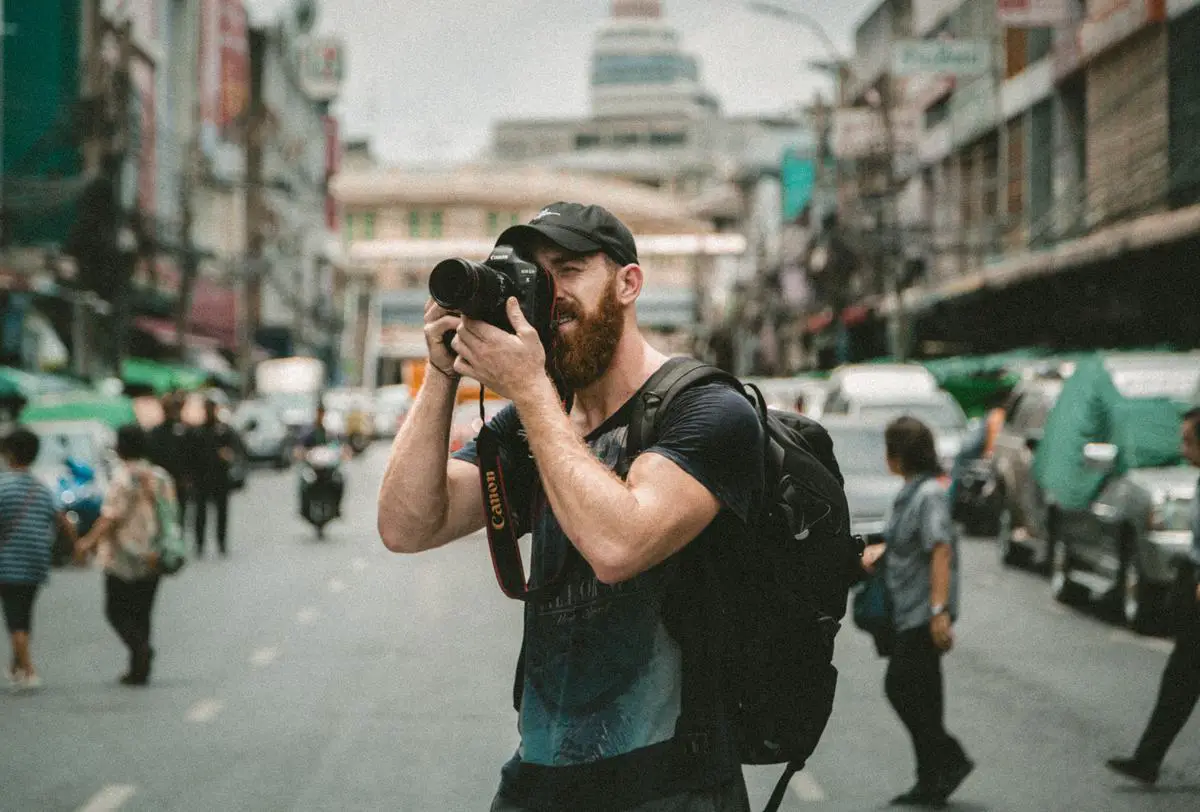
Photo by jakobowens1 on Unsplash
Insight into the Photography Industry
Understanding the Photography Industry
Just like any other profession, photography demands knowledge of its industry’s competitive landscape. This involves understanding the influence and reputation of top photographers, emerging trends and styles, the rates for various types of photoshoots, and getting an up-to-date understanding of technology used in photography, among other things. Subscribing to photography magazines, both in print and online, attending photography exhibitions and fairs, and participating in photography forums can give you insights on these aspects.
Identifying Specific Job Roles in Photography
The field of photography involves several different job roles, including fashion photographer, photojournalist, nature photographer, food photographer, event or wedding photographer, and many more. Each type of photography has its unique demands and it often requires specialization in a niche. Your interests, strengths, and geographical location can guide you to choose a specific photography job role.
Understanding Payment Structures, Contracts, and Copyright Conventions
It’s essential to know the typical payment structures in the photography industry. These can be based on the duration of photoshoots, editing work, licensing, or publishing of photographs. You also need to become familiar with the standard contracts used by photographers with their clients. It’s crucial to understand copyright laws to protect your work and to avoid infringing on others’ rights. Learning these aspects may require consultancy with a legal professional or joining professional photography associations that can provide guidance.
Determining Pricing for Your Work
Another essential aspect of turning photography into a career is knowing how to set prices for your work. This would depend on the type of photography, your expertise, operating costs, time spent, and the prevalent price range in the industry. Initially, working with established photographers provides an understanding of how work is priced in the industry.
Getting Hands-on Experience through Internship or Assistance
Interning or assisting a professional photographer can provide valuable experience. This exposure can introduce you to the various nuances of the profession, including taking care of equipment, understanding light, angles and composition, dealing with diverse customer demands and managing the post-processing of photographs. It can also educate you about the harder realities of the profession, such as irregular work timings, market demands, and dealing with competition. This hands-on experience can also help build a portfolio, a critical component when applying for professional gigs or freelance assignments.
By following these guidelines, you pave the way for a successful transition into a professional photography career.

Entering the photography industry is not simply a creative pursuit, but it’s a business venture that demands dedication, patience, continuous learning, and strategic networking. The journey doesn’t end when you’ve captured impressive images; you must also navigate the complexities of marketing your brand, networking, copyright laws, and pricing structures. Balancing the art and business sides of photography will propel you toward a sustainable, rewarding career, turning your pastime passion into your professional livelihood. Just remember, in the vast tapestry of the photography industry, your unique perspective and skills are your very own work of art.
